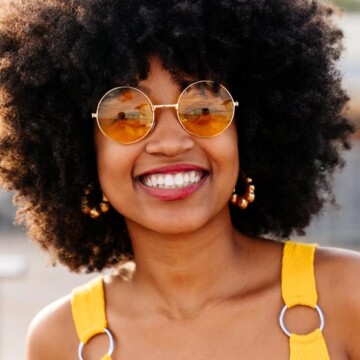
L'Oreal HiColor hair dye is a popular way to achieve dramatic color changes on dark hair. There's a good chance you already know that the hair dye doesn't contain bleach, but the fact that it can lighten dark hair so well has people wondering if it’s damaging.
We will address that in detail in this article so you can easily decide whether it’s a product you’d like to try.
Table of Contents
- 1 Does L'Oréal HiColor Damage Your Hair?
- 2 Key Takeaways
- 3 How to Minimize Damage with L’Oreal HiColor (Before Dyeing)
- 4 Limit Damage After Dyeing
- 5 Frequently Asked Questions
- 5.1 How Does L'oréal HiColor Work?
- 5.2 How Often Can I Use Loreal HiColor?
- 5.3 What Happens if You Use Loreal HiColor Without Developer?
- 5.4 Can I Use Loreal HiColor on Dirty Hair?
- 5.5 Is the Loreal HiColor Permanent?
- 5.6 Does Loreal HiColor Have Ammonia?
- 5.7 How Long Should I Leave Loreal HiColor in For?
- 5.8 Does L'oréal Hair Color Cause Hair Loss?
- 5.9 Does L'oréal HiColor Work on Bleached Hair?
- 5.10 How Long Does Loreal HiColor Damage Your Hair?
- 5.11 Related Articles
Does L'Oréal HiColor Damage Your Hair?
L’Oreal HiColor can easily damage your hair. L’Oreal HiColor is specifically formulated to take your hair from the blackest black to bright red, violet, magenta, blue, or even blonde in just one step.
The main plus is that it does so without bleach, which is known to cause significant damage to the hair. Unfortunately, many think that since L’Oreal HiColor doesn’t have any bleach, it couldn’t possibly be damaging to your hair - this couldn’t be further from the truth.
Just because certain hair products don’t contain or require bleach, that doesn’t mean that they're damage-free.
Key Takeaways
- L’Oréal HiColor Impact on Hair. L'Oréal HiColor, a permanent dye, can be damaging despite being bleach-free. It's designed for vibrant color changes. However, it can lead to hair dryness, brittleness, and split ends, especially with high-volume developers.
- Developer Strengths. HiColor requires a 30 or 40-volume developer for intense color and lift. These higher strengths can increase the risk of hair damage compared to lower volumes like 10 or 20, which are less harmful.
- Pre-Dye Hair Assessment. Assessing hair types and conditions is crucial before using HiColor. The dye is suitable for strong, unprocessed hair. Existing hair issues like split ends or dryness can worsen using this hair coloring product.
- Hair Care and Preparation Tips. To minimize damage, avoid harsh styling practices and wash your hair before dyeing. Deep conditioning and moisturizing are recommended before applying HiColor for the best results.
- Post-Dye Hair Maintenance. Post-dye care is essential to maintain hair health. To maintain a long-lasting, vibrant hair color, limit hair washing. Avoid using heat styling. Regularly condition your hair to manage the effects of the hair dye.

L’Oreal HiColor Requires 30 to 40 Volume Developer
According to the instructions from the manufacturer, L’Oreal HiColor hair dye (check current price) should be mixed with a 30 or 40-volume developer to lift the natural pigment from your strands. Here's where things get hairy.
Developers come in several levels, including 10, 20, 30, and 40. The higher the level, the more lift and potential damage you can expect. Here, we’ll take a look at each developer's strength when used with permanent hair color:
- 10-volume developer - Opens the hair cuticles very slightly. It’s a deposit-only option (no lift and virtually no damage).
- 20-volume developer - Commonly used for slight color changes and can produce 1 to 2 levels of lift. Some people notice that their hair is drier than usual after using 20 volume developer.
- 30-volume developer - Produces 2 to 4 levels of lift and covers grays with ease. Some will experience dry, brittle hair after using a 30-volume developer.
- 40-volume developer - Produces 3 to 4 levels of lift for high-impact color changes and full gray coverage. This developer strength should be used with caution due to the damage and breakage that could occur.
Since L’Oreal HiColor requires a 30 or 40-volume developer, you have to be careful when coloring your hair with it. Look out for increased split ends, severe dryness, and breakage.
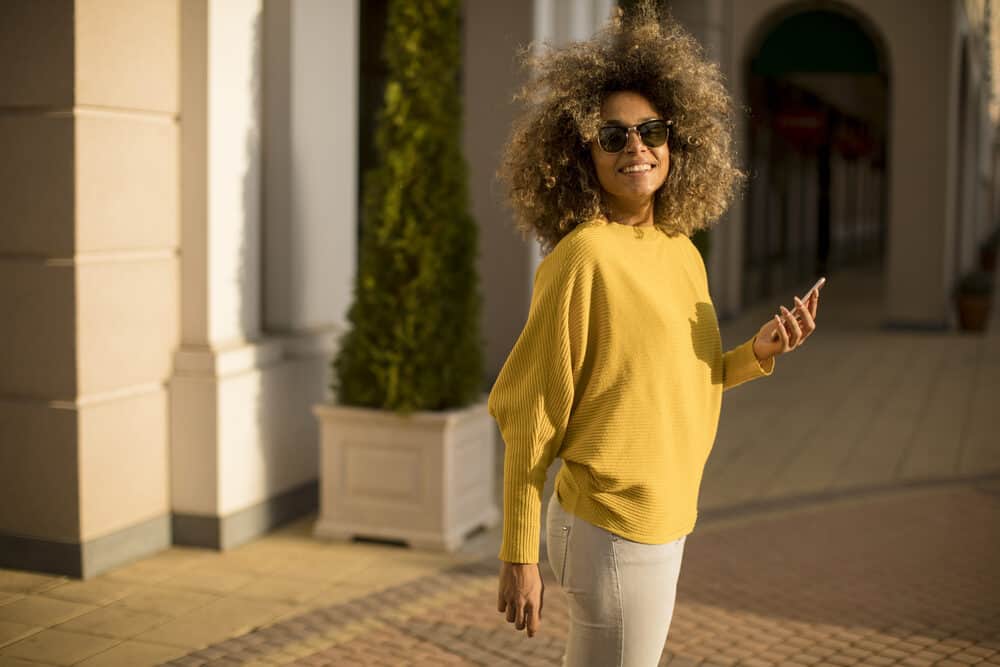
How to Minimize Damage with L’Oreal HiColor (Before Dyeing)
People color their hair with hair dye and 30 volume developer all the time - some are able to preserve the health of their hair while others are not.
To give your hair the best chance of staying healthy post-processing, we recommend that you follow the below steps before dyeing your hair.
Look at Your Hair
Before you even think about applying 30 or 40-volume developer to your hair, examine your curls. If you’re already dealing with split ends, breakage, or chronic dryness, putting strong chemicals on your hair is not a good idea.
You’re a good candidate for L’Oreal HiColor if your hair is strong, unprocessed, and well-maintained.
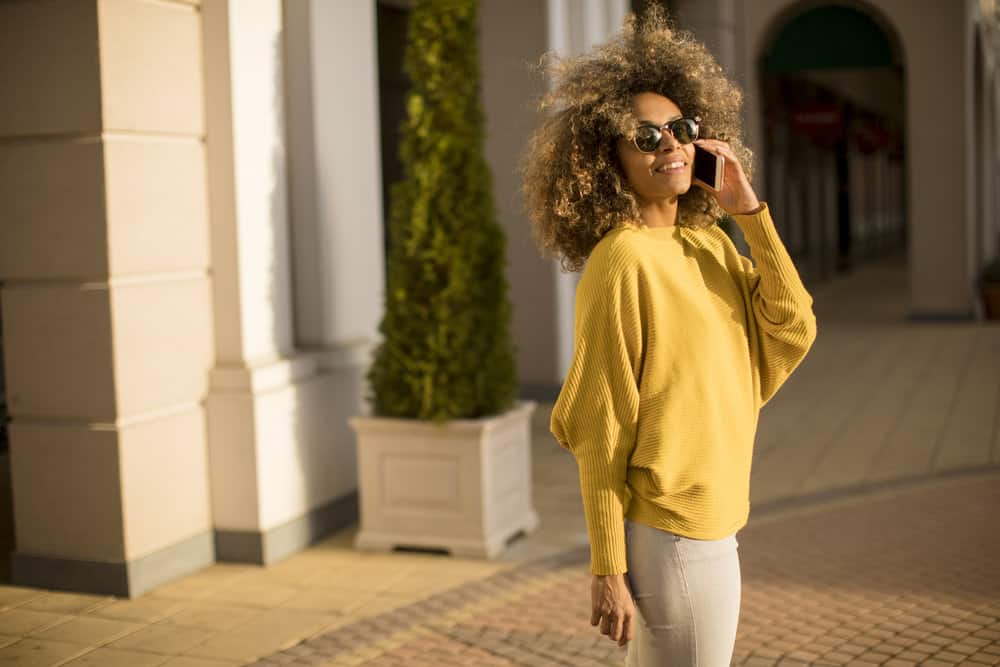
Refrain From Damaging Styling Practices
We recommend refraining from heat-styling or relaxing your hair within a week or two of coloring it. The better the condition of your hair before coloring it, the better the results will be.
It’s also a good idea to avoid any high-manipulation styles - think box braids, faux locs, etc. Styles like these can leave your hair vulnerable to damage from coloring.
Note: Significant damage can occur when you make large changes in your hair's color. For example, going from dark brown hair to intense red or a brighter shade will require some type of lightener (like bleach) and expose your hair to potential damage.
If you have dark hair (e.g., black hair, naturally dark brown, reddish-brown hair, medium brown hair, etc.), read these articles to learn how to dye your hair without causing significant hair damage.
- What Color Can I Dye My Black Hair Without Bleaching?
- How to Bleach Black Hair Without Damage at Home
- Can You Bleach Your Hair with Clorox?
- Learn How to Use Coconut Oil Before Bleaching Hair
- How Long Should You Leave 20 Volume Bleach in Your Hair
- How Often Can You Bleach Your Hair Safely Without Damaging It
- How to Dye Dark Hair Purple With and Without Bleach at Home
Don’t Wash Your Hair
Avoid shampooing your hair for a couple of days before coloring it. To protect your scalp from the potentially damaging effects of high-lift color, you must preserve its natural oils (sebum).
If you wash away your hair’s sebum immediately before coloring it, there’ll be no barrier between your scalp and the hair color.
A raw scalp and hair dye don’t mix well, often leading to scalp redness, burning, swelling, and even hair loss.
If you have buildup on your hair from gels, pomades, or a flaky scalp, wash that away a couple of days before dye day. That way, your scalp will have some time to produce more protective sebum.
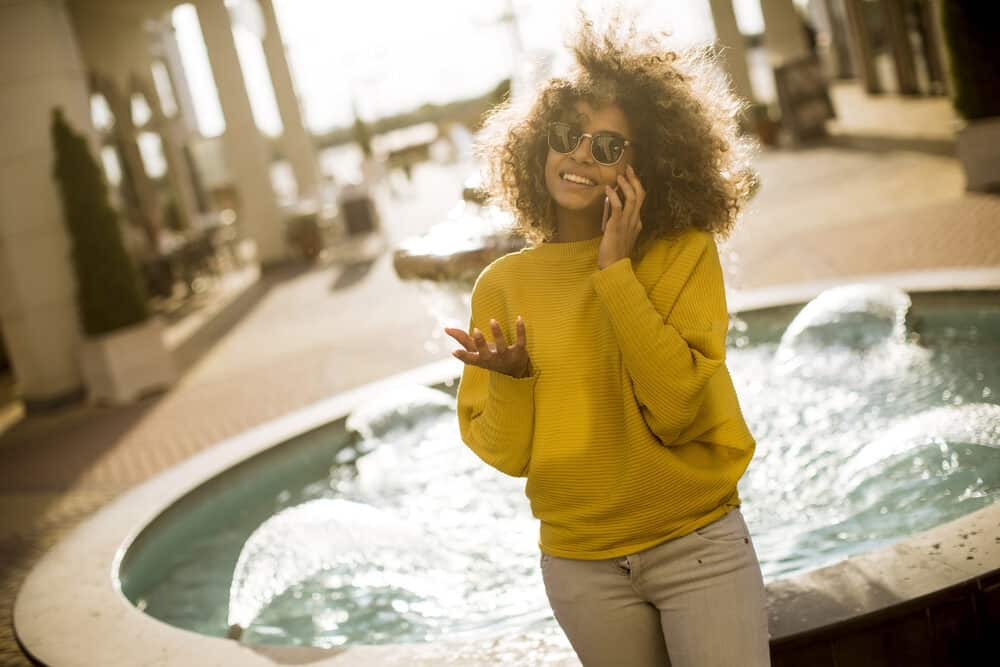
Moisturize and Deep Condition
In addition to limiting washes, it’s essential to moisturize and deep condition your hair 24 to 48 hours before dyeing it. This will strengthen and hydrate your hair, reducing the chances of damage and dryness following the hair dyeing process.
Read the Instructions Carefully
One of the best things you can do to minimize damage to your hair is to read and understand the instructions on the L’Oreal HiColor packaging.
They will specify just how much hair color and developer you should mix, how long to leave the mixture on your hair, and more.
If you read through the instructions and have questions, you can take some time beforehand to call the manufacturer or a stylist for assistance. Only after you completely understand the instructions should you color your hair.

Do a Strand Test
Now that you’ve done some prepping and read the instructions on the hair dye packaging, it’s time to do a strand test.
This is a step that everyone should take to prevent undesirable results and irreversible hair and scalp damage. To do the test, follow the below instructions:
- Put some gloves on to protect your hands.
- Mix 1 teaspoon of L’Oreal HiColor hair dye and 1 ½ teaspoons of developer into a bowl (if the instructions on the packaging are different from these, go by those instructions instead).
- Choose a tiny section of hair near the back of your head and apply the color.
- After about a half-hour, rinse the hair color from the strand and then allow it to air dry.
- 24 hours later, note the following:
- How the hair looks - Is it the color you hoped to achieve?
- How the hair feels - Does the hair feel smooth and supple or brittle and broken?
- Stretch the hair strand out and see if it bounces back - if it doesn’t, the hair has lost its elasticity.
After doing the strand test, you can make an educated decision about whether to go through with the full dye job, try a different color shade, or shorten the processing time.

Limit Damage After Dyeing
Once you dye your hair with L’Oreal HiColor, your strands will be porous and prone to further damage. It will make a huge difference if you take the following steps to keep your hair as healthy and vibrant as possible:
- Give your hair a break - Don’t wash it unless absolutely necessary, limit styling, and stay far away from heat. Also, cover your hair up at night to preserve its moisture levels.
- Condition often - Condition your hair every time you wash it, and deep condition it at least once per week. Your thirsty strands will thank you.
- Use a heat protectant - If you can't stay away from the heat, apply a heat protectant beforehand to form a protective barrier on your color-treated hair.
- Put the blow-dryer down - Blow dryers are a form of indirect heat that can wreak havoc on color-treated hair. Instead of blow-drying your hair, air-dry it.
Frequently Asked Questions
Welcome to our FAQ section on L'Oréal HiColor. Here, we provide clear, concise answers to common questions about this popular hair coloring product and its effects on curly health.
How Does L'oréal HiColor Work?
L'Oréal HiColor works by using ammonia and peroxide (in the developer) to open the hair cuticle and deposit color. It's specifically formulated to provide vibrant and long-lasting color on darker hair. It lifts the natural pigment and deposits the new color.
How Often Can I Use Loreal HiColor?
Loreal HiColor, being a permanent dye, is designed for long-lasting color. It should be used every 4-6 weeks, depending on hair growth and color fading. Overuse can lead to hair damage. Following this schedule keeps your hair color vibrant and healthy.
What Happens if You Use Loreal HiColor Without Developer?
Using Loreal HiColor without a developer is not effective. The developer, often hydrogen peroxide, activates the hair dye and facilitates the color change process. Without it, the dye won't penetrate the hair shaft properly, resulting in minimal or no color change.
Can I Use Loreal HiColor on Dirty Hair?
Yes, you can use Loreal HiColor on dirty hair. It's often recommended to dye hair that isn't freshly washed. Natural oils on the scalp can protect against potential irritation from the dye. However, excessive buildup should be avoided as it can hinder color absorption.
Is the Loreal HiColor Permanent?
Loreal HiColor is a permanent hair dye. It is formulated to provide a long-lasting hair color and significant changes, especially for darker hair. As a permanent dye, it alters the natural hair color and requires regrowth touch-ups.
Does Loreal HiColor Have Ammonia?
Yes, Loreal HiColor contains ammonia. Ammonia is a common ingredient in permanent dyes, used to open the hair cuticle for color deposition. This can lead to a strong smell and potential hair damage, so proper hair care post-coloring is essential. Consider a semi-permanent color if you want a more gentle hair product.
How Long Should I Leave Loreal HiColor in For?
The recommended time for leaving Loreal HiColor in hair is typically around 30 minutes. However, following the specific instructions on the product packaging is essential. Time can vary based on the desired color intensity and hair type.
Does L'oréal Hair Color Cause Hair Loss?
L'Oréal hair color, like other hair dyes, can potentially cause hair damage, but hair loss is not a common side effect. However, if used improperly or too frequently, it can lead to hair breakage and thinning. It's important to follow application guidelines and provide proper hair care afterward.
Does L'oréal HiColor Work on Bleached Hair?
Yes, L'Oréal HiColor works on bleached hair. It can provide vibrant color to previously bleached hair. However, since bleached hair is more porous and fragile, the color result might be more intense, and the hair is more susceptible to damage.
How Long Does Loreal HiColor Damage Your Hair?
The extent and duration of damage from Loreal HiColor depend on hair type and care. Proper application and post-coloring care can minimize damage. However, repeated use without adequate hair care can lead to long-term damage since it's a permanent dye.
- Is Feria Bad For Your Hair?
- Can I Dye My Hair Right After Washing It?
- Best Orange Hair Dyes
- Removing Hair Color to Go Gray
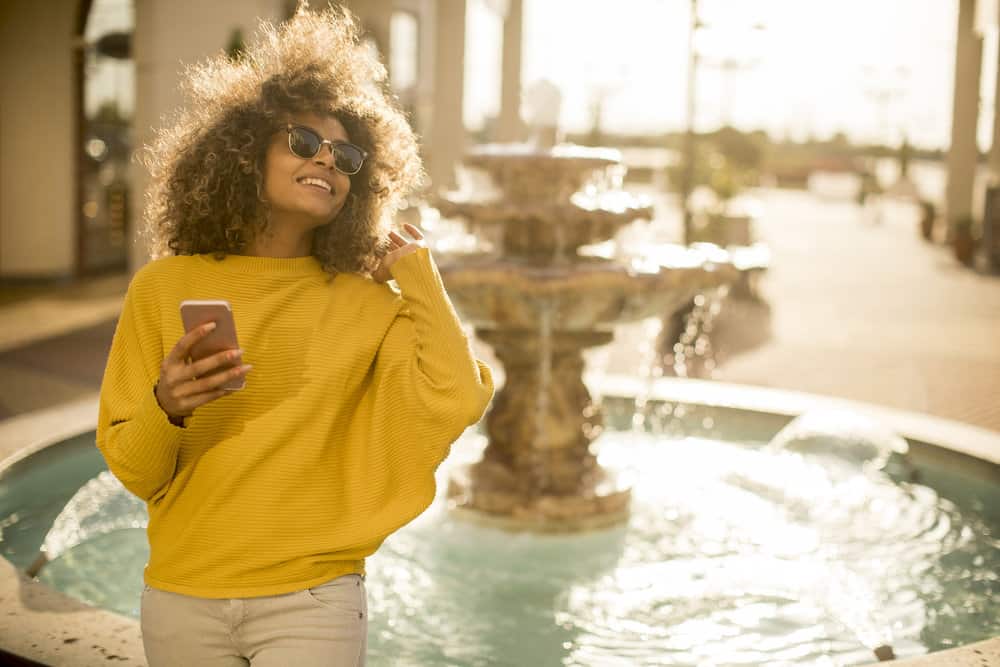
All of this may seem overwhelming, but it’s necessary if you want to keep your hair on your head following a harsh color job.
If you don’t have the desire, time, and patience to do these things, you should choose a no-damage color option, like temporary or semi-permanent hair dye.
With L’Oreal HiColor, it’s crucial to take every precaution you can to maintain the integrity of your hair.
Though the product will not be as harsh on your hair as bleach would be, it can still alter the quality of your hair for the worse. We hope that the information in this article enables you to transform your hair without ruining your curls.


